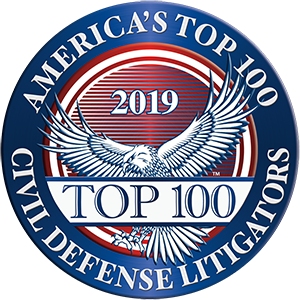Many business owners and managers can relate to the “oh no, what now?†moment when they first learn a lawsuit has been filed against their company. Although businesses would prefer to avoid litigation entirely, it’s important for organizations to have systems in place to assist with prelitigation and discovery needs.
The litigation process can be separated into four basic stages: pre-suit investigation and pleadings stage; discovery (exchange of evidence); trial or settlement; and posttrial enforcement or appeal. This article focuses on the first two steps. Keep this article handy as a quick reference guide when a lawsuit is filed or as a framework for your organization’s own litigation checklist.
Step 1: Pleadings Stage
Litigation begins with the pleadings, which are formal documents stating each party’s basic propositions. The plaintiff starts by filing a complaint, informing the defendant what the dispute is about and what damages they’re seeking. Filing a complaint then triggers an obligation on the part of the defendant to respond with its legal “answer†or “demurrer†or “motion to dismiss†(depending on the Court jurisdiction).
If your organization is served with a summons and a complaint, your first steps should be:
- Contact your business insurance carrier and put them on notice of the claim;
- Contact your organization’s legal counsel;
- Determine the deadline for responsive pleadings with counsel; and
- Determine if there’s an applicable arbitration agreement.
During the pleadings stage, work with your organization’s inside or outside legal team to obtain the necessary information for admitting or denying each of the allegations. You must respond within a specified time or face a potential default judgment.
At this time, also gather relevant documents and implement litigation holds (which means preserving evidence). Litigation hold letters should be sent to the plaintiff’s counsel and relevant personnel to maintain emails and documents that may need to be provided during the discovery process. Coordinate with your IT department to ensure any automatic email-purge policies are suspended for the email accounts of relevant parties. Parties have a duty to preserve relevant evidence.
Step 2: Discovery
Soon after the parties have filed their pleadings, the court will issue a scheduling order with a list of deadlines, including dates for discovery, depositions, dispositive motions, and trial dates. Discovery is the formal process of exchanging information between the parties about the witnesses and evidence they will present at trial. When discovery requests are served to a business, the management team plays an integral role in gathering responsive information. Common documents in business lawsuits include:
- Meeting minutes;
- Personnel files;
- Grievance files;
- Investigation files;
- Unemployment files;
- Documents from related agency proceedings; and
- Email communications.
When retrieving email communications, legal counsel for the parties can agree on search terms based on the topics at issue in the litigation, which will limit the number of emails you need to gather. Management may also be involved in reviewing and certifying the organization’s responses to a plaintiff’s discovery requests.
Typically, a suing party will request to conduct a corporate representative deposition. The corporate representative is tasked with speaking on behalf of the organization and presenting its collective knowledge. Management or other knowledgeable employees may be selected as the corporate representative because of their familiarity with policies and procedures. Legal counsel will work with the selected representatives to ensure they are informed on all of the noticed deposition topics.
Bottom Line
Business owners and managers may be involved in all aspects of litigation, including settlement or trial. This article only highlights the significant tasks in the pleading and discovery phases that involve the management team. Having procedures in place for prelitigation will ensure the least amount of disruption to an organization and its regularly scheduled business. Work closely with legal counsel to assist in maintaining prelitigation policies and procedures, ensuring your organization is well-prepared to handle any legal challenges that may arise.






